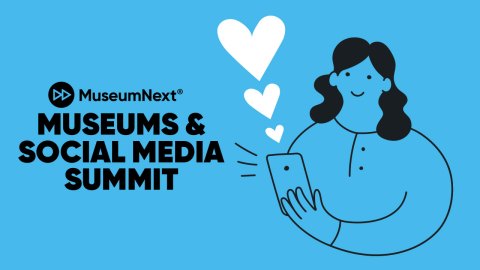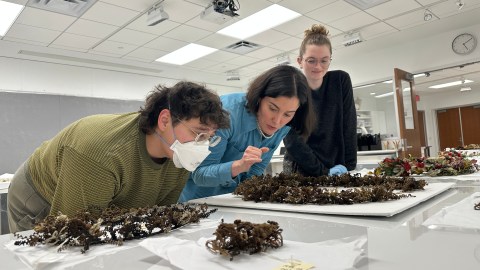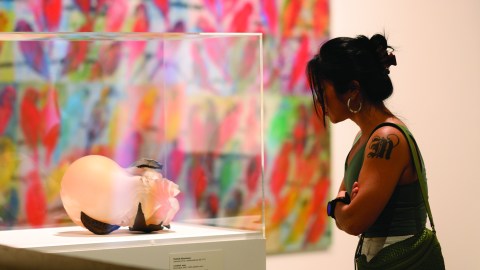
Next up in our #AAM2017 guest posts, Megan Bednarz previews the case study she will present on Sunday, May 7, from 1:45 – 2:15 pm. If you haven’t registered for the conference yet—this series of sneak peeks might just convince you to join us in St. Louis!
I work as an educator at the Intrepid Sea, Air & Space Museum, a nonprofit in New York City that promotes the awareness and understanding of history, science and service. The Museum is centered on the aircraft carrier Intrepid, and my job is to bring content off-site to New Yorkers who are unable to visit. I developed Sketching It Up, a weeklong 3D design workshop for students ages 16–17 who are incarcerated on Rikers Island. The workshop, funded by the NYC Department of Cultural Affairs and created in partnership with the NYC Department of Correction, began in 2014. My work with these students relates to two TrendsWatch 2017 themes: empathy and criminal justice reform.
There are strict rules about what materials I carry in and out of jail, so I realized that success off-site would look different than success on-site. This is especially true for audiences who do not feel represented in museums. To connect the Museum’s aircraft collection to students’ lives, I encourage them to see themselves as the aircraft designers. My audience is transient, so I designed the program to fit this objective into one week.
On Monday, we examine and compare aircraft diagrams from the Museum’s collection. On Tuesday, students draw scale diagrams of their own aircraft. On Wednesday, we turn these drawings into models using 123D Design. On Thursday night, using the Museum’s 3D printers, I print each model so that students can hold an artifact of their own creation. I collect addresses from each student and send their model to a loved one. It is heartwarming to see the students buzzing with creativity, feeling proud and calling home to talk about their work.
On Friday, my students receive copies of their drawings, screenshots of their models, certificates of completion, and letters recounting the skills they used, the good behaviors they showed and an invitation to visit the Museum when they are released. I also give them time to reflect.
Sketching It Uptook two years of piloting, researching and networking. It was important to be clear about my intentions, to put the students’ needs first, to think realistically about the service I could provide, and to deepen my empathy so that I could better understand the challenges my students face. Talking to professionals who do similar work and to young people who’ve been through traumatic experiences was crucial.
I drew inspiration from all around me. I attended local lectures, panels and events; signed up for professional development at the Youth Development Institute; observed a friend teach at Doe Fund and asked her students what teaching styles they preferred; interviewed the founder of Voices Unbroken;brainstormed with peers at Children’s Museum of the Arts; set up conference calls with teachers at Rikers; and read about total strangers, like this one.
Here are some best practices I discovered along the way:
- Identify the resources you have to offer.
- Identify logistical challenges to work around.
- Learn about and respect student stressors, boundaries and needs.
- Adhere to clear, structured objectives that relate to the students’ lives.
- Find advocates who can match your program with receptive participants.
- When planning a lesson, build scenarios for students to practice healthy habits of mind.
- When teaching, disconnect from your ego.
- Maintain high expectations for student work and provide the support they need to meet those expectations.
- Give students opportunities to be experts and to feel heard and seen.
- Highlight student strengths through positive reinforcement.
- Share hope and optimism by viewing students as museum-goers and lifelong learners.
If I ever begin to doubt the connection between cultural institutions and criminal justice reform, I think about what my students told me in their reflections and I remember to not give up and aim for great—because we are capable of stuff we never thought of. I hit my stride last summer, finally connecting everything I learned about my audience, myself and the social work of museums. This year, in addition to sharing this case study at the American Alliance of Museums Annual Meeting, I will be presenting at the 100Kin10 Annual Partner Summit, and New York City Museum Educators Roundtable Annual Conference. If you attend any of these conferences, please come by and say hello!
Megan Bednarz
Museum Educator for Community Engagement
Intrepid Sea, Air & Space Museum
mbednarz@intrepidmuseum.org










Great work, Megan!
Can you share a bit about how you initially built the relationships w Rikers to make this possible?
Thank you for your comment, Nina!
The VP of Education at Intrepid already had a contact person at the Department of Correction’s from her previous experiences working at the New York Public Library. We reached out and from there we were directed to the Deputy Commissioner of the Youth Offender Division, who gave us a tour of the facility, time to speak with youth and program officers as well as an overview of needs community partnerships can help fill for the 16 and 17 year olds, specifically. At the time, my team was already hosting felid trips at the museums for District 79 students who go to school in non-secure facilities, so we decided creating education programs for secure facilities would be a natural progression to explore.